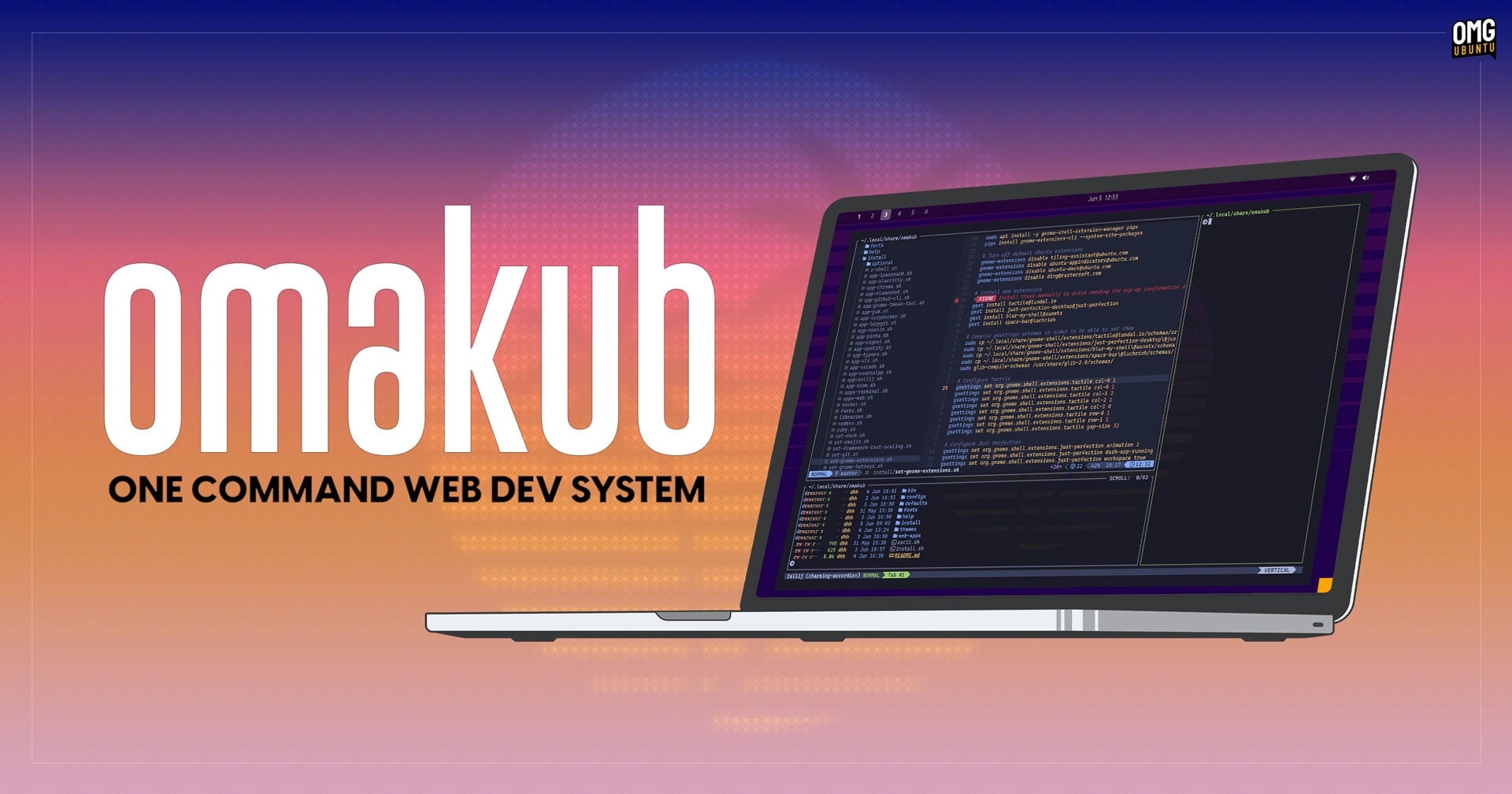Ubuntu delivers a user-friendly, customizable desktop environment right from the start. Nevertheless, it’s true that what works for one may not suit another.
Personalizing the appearance and functionality of Ubuntu, loading essential applications and fantastic GNOME Shell extensions, and dedicating time to adjust the distribution to meet individual needs is a common practice. The flexibility to do so is a hallmark advantage of the Linux ecosystem.
For many, these adjustments are simple: installing several applications, choosing attractive desktop backgrounds, possibly adding a couple of extensions, and then enjoying a seamless operation.
However, what about users requiring more specialized environments? The array of options can be overwhelming, the setup daunting, and the effort needed to explore, master, and optimize many tools and configurations too burdensaome for some.
Wouldn’t it be great if you could run a command and have someone else set it up for you?
Enter Omakub.
Omakub – One Command Transformation
So what is Omakub? It’s a new bash script that, when run, will transform a fresh Ubuntu 24.04 LTS installation into a system optimised for web development, all by running a single command.
“Omakub was started by me, David Heinemeier Hansson, to streamline my own Linux box bootstrapping, as well as to help our technical employees at 37signals switch to Linux. That’s very much a specific context where Ruby on Rails, web development tooling, and commercial services all intermingle.”
“No need to write bespoke configs for every essential tool just to get started or to be up on all the latest command-line tools,” the website says.
It bills itself “an opinionated take on what Linux can be at its best”.
Nothing Omakub does can’t be done other ways, manually, or using other tools. And the developer notes the choices the script makes aren’t necessarily better than choices made in other distros, setups, or configuration guides.
Rather, it’s just a simple way to get a solid, preconfigured setup easily on a vanilla Ubuntu install.
Why is it only for Ubuntu?
“It’s using vanilla Ubuntu because that’s one of the most widely adopted Linux distributions, and one that is even a pre-install option from many computer vendors,” creator David Heinemeier Hansson explains.
“But while Ubuntu has a great package manager in apt, many of the tools that developers want either haven’t been packaged, need more recent versions than what has been frozen in the LTS, or need actions post-install necessary for the best operation.”
Anyone deeply engaged with nixOS, or a strong supporter of Arch, likely doesn’t need a script to help them make audacious choices with their software. They are familiar with these tools, understand where to find them, and how to implement them—and probably already possess the necessary dotfiles!
Thus enters Omakub.
A ‘Mixtape’ of Software & Tools
Omakub commits fully to Alacritty.
Omakub is not a haven for enthusiasts of free and open-source software exclusively. It is designed for those who prioritize practicality over philosophical purity, incorporating a selection of software that meets the demands of everyday use rather than adhering strictly to open-source principles.
The notable software additions include:
- Google Chrome (default browser)
- Spotify
- Zoom
- 1Password
- VSCode
- Ulauncher
- Xournal++
- Flameshot
- VLC
- Pinta
Alacritty terminal is included as well, featuring Zellij for managing multiple panes. It comes pre-configured with tools such as exa, fzf, rg, zoxide, and bg.
Command-line and other notable tools:
- Docker (preconfigured with MySQL + Redis)
- Lazydocker for fancy Docker control
- NeoVim
- gh Github CLI
- rbenv for Ruby management
- nodenv for Node.js management
GNOME Shell remains the standard setup but includes some extensions that enhance a keyboard-driven, window-tiling workflow. While you can still use your mouse, the most effective user experience features rely on keyboard shortcuts.
Users can choose from various themes with custom wallpapers, Cascadia Mono is set as the default terminal font, and numerous other minor enhancements are made throughout the system.
But, similar to any operating system (except perhaps Windows), users of Omakub are free to modify, ignore, or turn off any of the script’s features that do not fit their preferences — it’s merely a suggested setup, not a requirement.
Want to try Omakub?
You can review the Omakub bash script on GitHub and visit the impressive official website to watch a detailed 25-minute video showcasing the application. The video also delves into the rationale behind the script — and obviously, includes instructions on how to run it.
You MUST run this on a FRESH Ubuntu 24.04 LTS install to which you have not made any major changes. You can run it on an existing setup but keep in mind it’s designed for a fresh one – you’ll be on your own if things go wrong/screw up.
The command will download and execute the script. Everything else is automated save for approval when the 4 GNOME Extensions are installed. Once the scripts completes you should logout so that the new settings can take effect. I recommend a reboot too.
Obviously keep in law that running scripts from the internet is frowned upon in Linux circles. If you plan to run this PLEASE look at what it does first. The script could have changed since I wrote this article.
Keep in mind that undoing the changes this script makes will require more than a single command!
At first glance, given my limited capacity to test it, Omakub seems to be an exceptional transformation tool that offers significant value with minimal effort. Its allure is likely to reach a broader audience than just the intended Linux web developers.
Thanks Makhate
